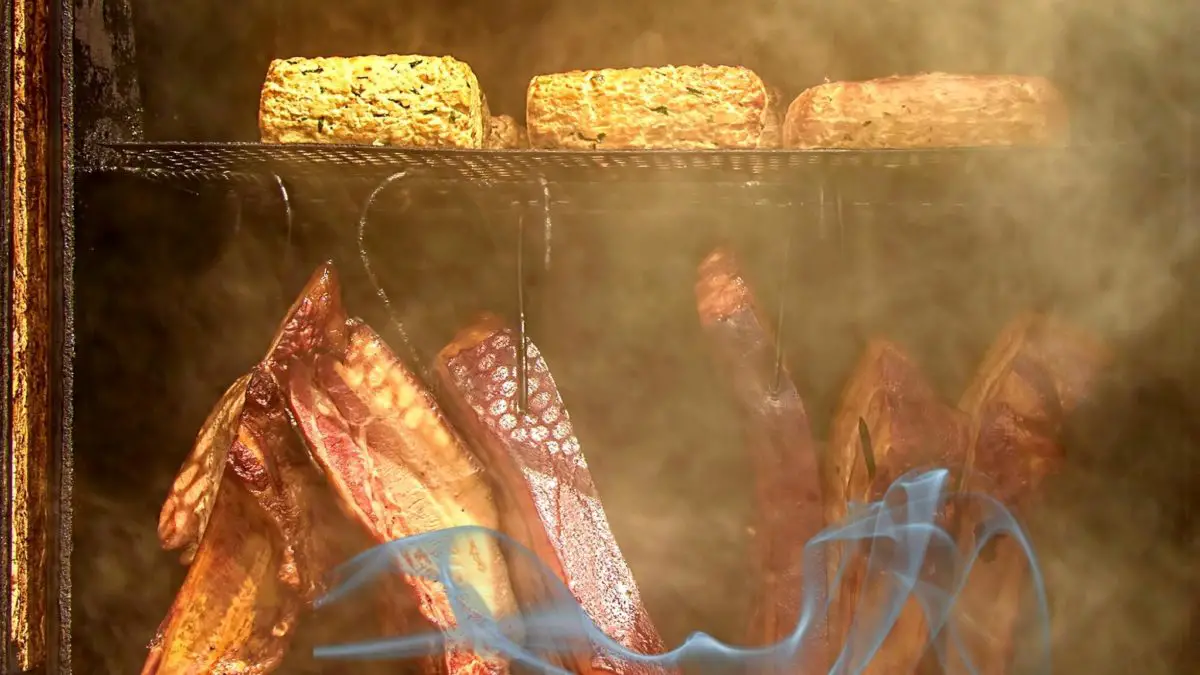There’s an old adage among many veteran smokers that excess = success. And it’s natural to assume that applies as much to the smoke as it does to the actual amount of meat. But the reality is that too much smoke CAN ruin your meat (yes, it IS possible!)
You shouldn’t use more than two ounces of wood chips in your smoker because more will create too much smoke, which will result in the formation of creosote. Other factors that can result in too much smoke include closing vents to keep the smoke in and increasing temperature too high.
Too much wood can be equally harmful—if not more so. And I’ll tell you exactly how to avoid this.

So how much wood is exactly too much in a smoker?
In this post we'll cover:
Wood Chips: Quality Not Quantity
We’re not discouraging our readers to dive deep into the diversity of meat smoker woods. Far from it. Smoking meat can be much more nuanced and complex than many people imagine, and every factor imaginable from the types of meat to weather conditions will ultimately affect your experience.
But when it comes to the types of wood you’re using, quality trumps quantity every time.
Using too much wood can result in a bitter, charred mess better used as a hockey puck than an actual meal.
It may seem tempting to maximize smoke by adding more wood to the fire. But the higher the temperature, the greater the room for error. And too much smoke and too much heat is a surefire recipe for disaster.
A basic rule of thumb is to use approximately two ounces of your preferred wood for smoking meat, and adjust the amount conservatively. If you’re a beginner, keep in mind that instructions are there for a very good reason.
Ultimately, you should be able to see wisps of smoke, not full-blown clouds. If the smoke smells too pungent? That’s a sure-fire sign you’ve either:
a.) Used low quality wood, or
b.) Used too much wood.
Bad wood + bad smoke = bad meat, my friend. It’s as simple as that.
Best Wood Chips To Avoid Too Much Smoke
No, all wood chips are not created equal. If they were, you’d have no problem using poison oak branches in your smoker (please don’t.)
It’s common among smoking enthusiasts to recommend red or white oak as an ideal starter wood chip for newbies. And we won’t disagree. When it comes to smoking meat, oak can be as mild or strong as you’d like—but it’s rarely overpowering.
We’ve already covered how to season wood and store it in the past, and those general rules hold true no matter what kind of wood you’re using to smoke meat. Properly dried wood will produce less smoke and make it easier to control.
As always, wood should be harder, not softer. But there’s a tendency to overdo the amount of wood chips used to smoke meat. And it’s a mistake that can not only ruin your meal.
It’s a mistake that can be downright dangerous.
Hardwoods burn hotter than softwoods and are therefore more suitable to get the right amount of smoke, plus they’ll burn for a longer period of time making it easier to get a consistent amount of smoke in your smoker.
Hardwoods also produce less smoke than softwoods.
Read more on how to choose the best wood chips for your electric smoker
Tips on the amount of wood to use
How Much Wood Should I Use When Smoking Meat?
The amount of wood you use for smoking meat depends on both the size of your smoker as well as the type of wood you’ll be using.
A Weber Smokey Mountain Cooker, for example, shouldn’t take more than 2-4 handfuls of wood to create just the right amount of smoke.
Instructions on both your smoker and your wood chips are there for a reason, and we strongly encourage you to follow them.
How Often Should I Add More Wood To My Smoker?
I recommend being conservative when adding wood to your smoker. A general rule of thumb is to add wood no less than every 45 minutes for an electric or charcoal smoker, and at least every 5 to 6 hours for a gas or pellet smoker.
Should I Use Wood I’ve Chopped Myself When Smoking Meat?
It may seem tempting to take a paleo lifestyle to the extreme and use wood you’ve chopped yourself for smoking meat. But until it’s been treated to ensure a safe and responsible smoke, the risk of carcinogens and natural pathogens from untreated wood is too great for you to take.
Should I Soak My Wood Before Smoking?
While soaked wood does burn longer, it’s rarely a clean burn. That’s because while the combustion level is minimized, any impurities in the wood are condensed in the steam. The result is a build-up of residue called creosote—an oily, thick and bitter sludge that ultimately ruins all your hours of hard work.
Conclusion
As we indicated, the types of woods used for smoking meat are incredibly diverse and versatile. Experimentation can sometimes lead to disastrous results. But it can also lead to flavor combinations you never would have imagined. That’s part of the thrill of smoking meat.
That’s because wood is one of the most primordial elements imaginable. It builds fires. It lends flavor. But it also destroys. We may have come a long way from our cavemen ancestors cooking fresh game over an open fire pit in a cave. But our cavemen ancestors also eventually knew the difference between a fire hazard and optimal cooking sources.
There’s no reason why you shouldn’t, either.
